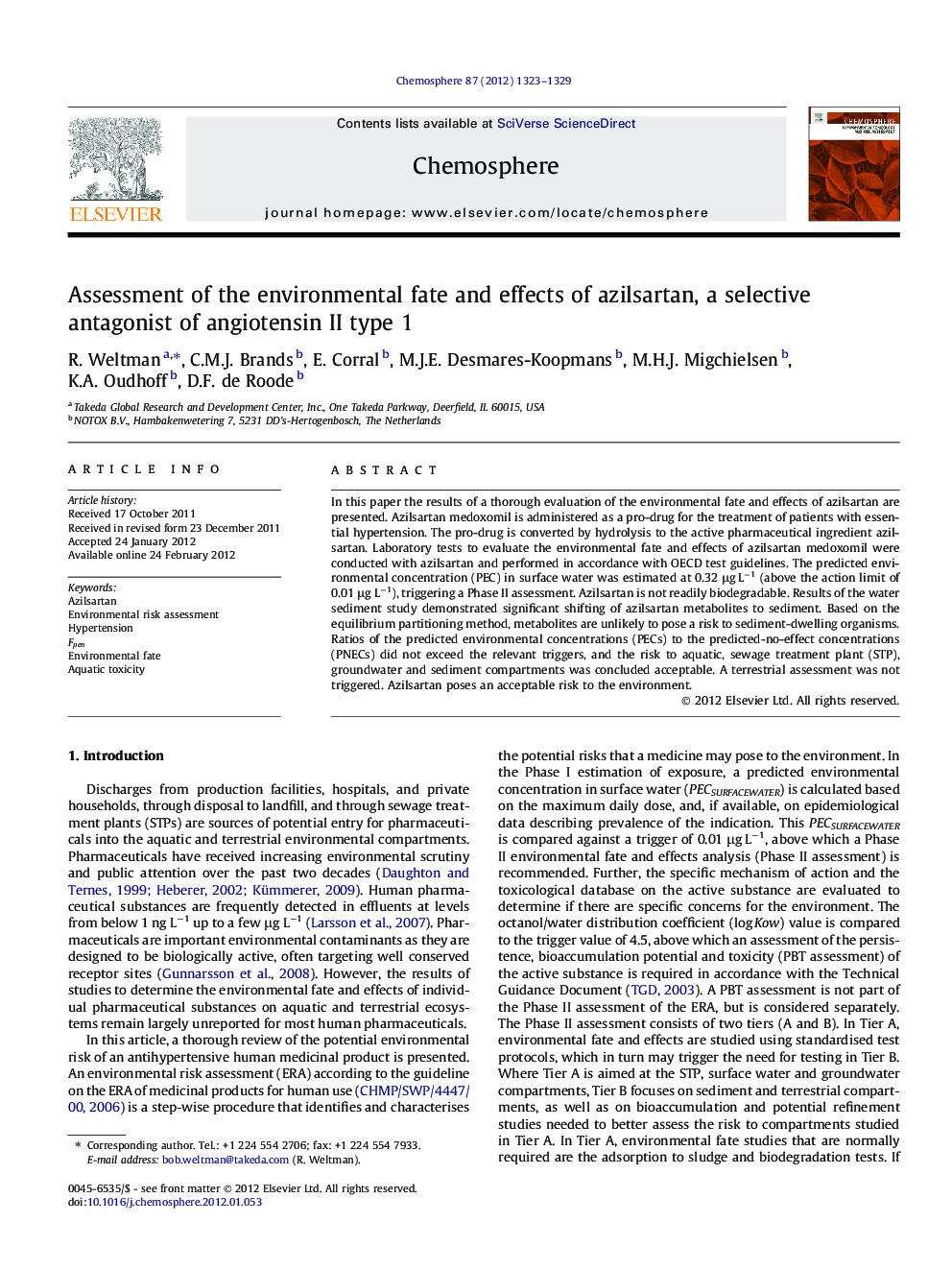| Article ID | Journal | Published Year | Pages | File Type |
|---|---|---|---|---|
| 4409730 | Chemosphere | 2012 | 7 Pages |
In this paper the results of a thorough evaluation of the environmental fate and effects of azilsartan are presented. Azilsartan medoxomil is administered as a pro-drug for the treatment of patients with essential hypertension. The pro-drug is converted by hydrolysis to the active pharmaceutical ingredient azilsartan. Laboratory tests to evaluate the environmental fate and effects of azilsartan medoxomil were conducted with azilsartan and performed in accordance with OECD test guidelines. The predicted environmental concentration (PEC) in surface water was estimated at 0.32 μg L−1 (above the action limit of 0.01 μg L−1), triggering a Phase II assessment. Azilsartan is not readily biodegradable. Results of the water sediment study demonstrated significant shifting of azilsartan metabolites to sediment. Based on the equilibrium partitioning method, metabolites are unlikely to pose a risk to sediment-dwelling organisms. Ratios of the predicted environmental concentrations (PECs) to the predicted-no-effect concentrations (PNECs) did not exceed the relevant triggers, and the risk to aquatic, sewage treatment plant (STP), groundwater and sediment compartments was concluded acceptable. A terrestrial assessment was not triggered. Azilsartan poses an acceptable risk to the environment.
► Azilsartan does not adsorb to sewage solids. ► It is rapidly removed from surface water, partitioning to sediment. ► Its half-life in sediment/water systems is low, warranting a “non-persistent” classification. ► It is non-toxic to sewage microbes and not a risk to sediment-dwelling organisms. ► It has low toxicity to aquatic organisms and is unlikely to present a risk to aquatic ecosystems.
